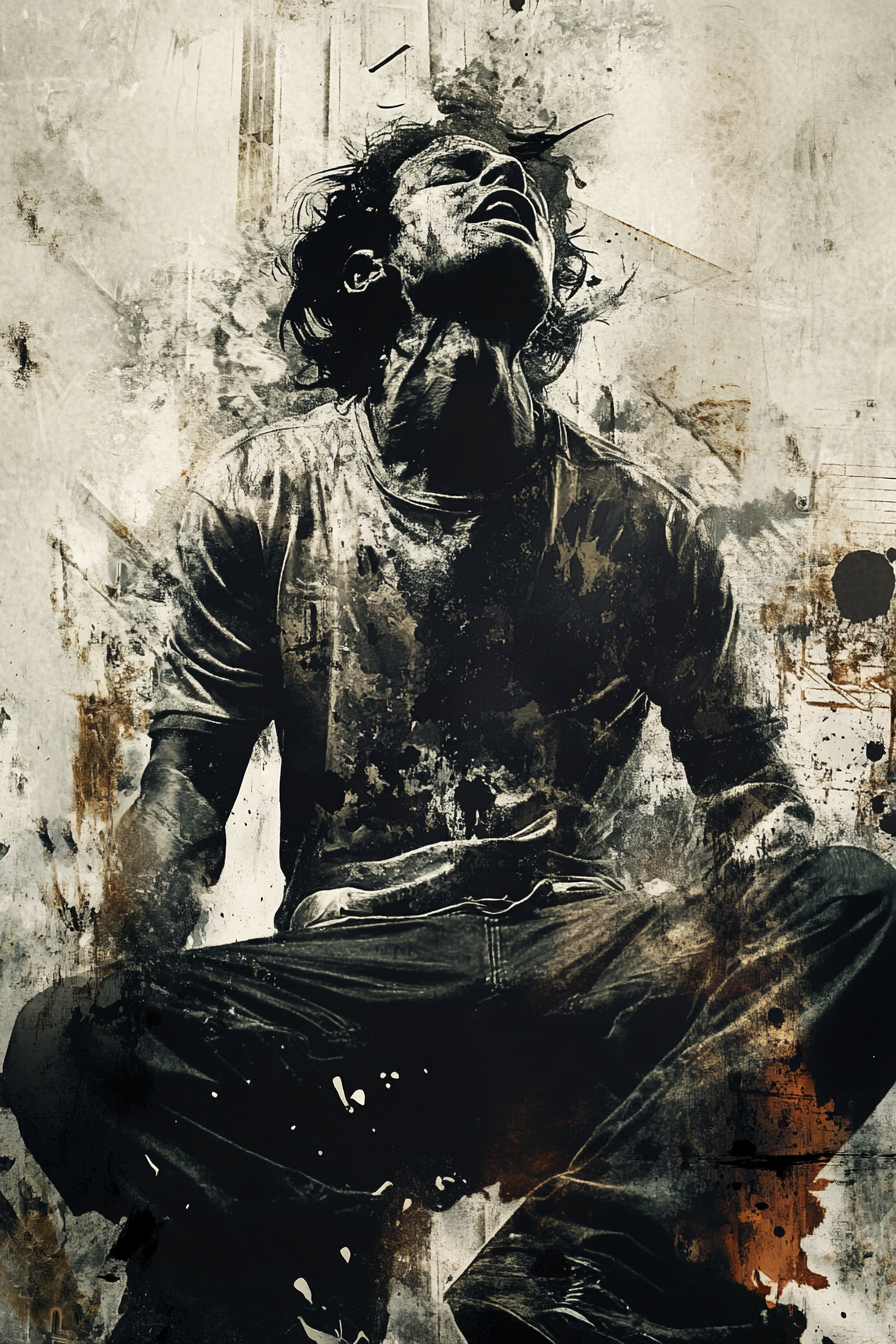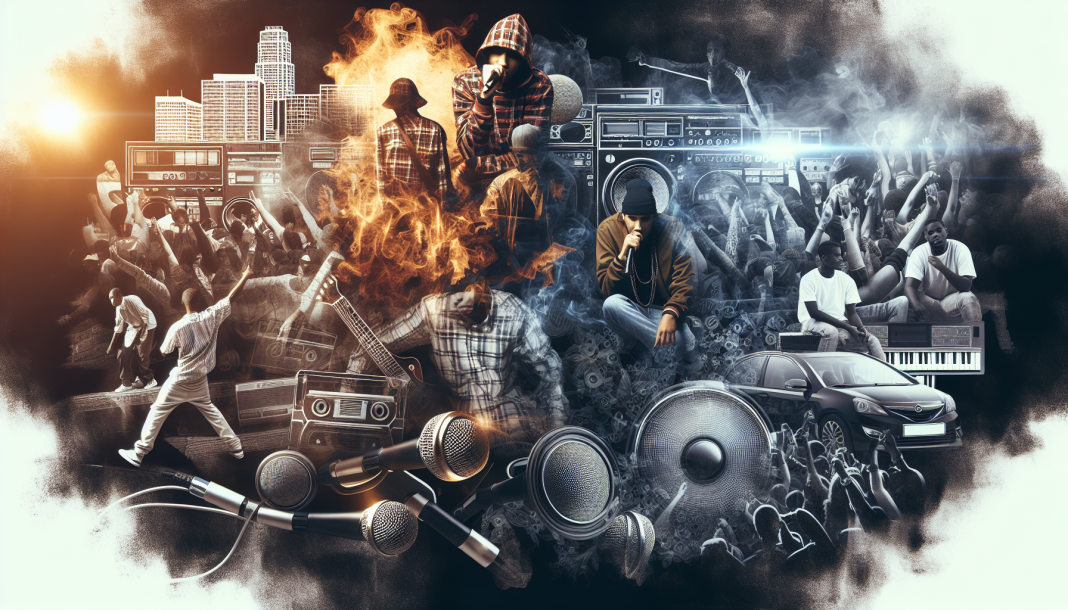Hip-Hop Beefs: Unveiling the Dynamics
Understanding the dynamics of hip-hop beefs requires a deep dive into their historical significance and how these rivalries have evolved over time. This section aims to shed light on these aspects.
Historical Significance of Hip-Hop Rivalries
Hip-hop rivalries have played a crucial role in shaping the genre. From lyrical battles to public feuds, these conflicts have created some of the most memorable moments in hip-hop history. Rivals often used beefs as a way to assert dominance, prove lyrical superiority, and engage listeners through compelling narratives.
One of the early significant rivalries was between KRS-One and MC Shan in the mid-1980s, famously known as “The Bridge Wars.” Their feud revolved around the origins of hip-hop, with each artist claiming their respective borough as the birthplace of the genre. This rivalry not only highlighted the competitive nature of hip-hop but also emphasized the genre’s roots in local culture and representation.
Evolution of ‘Beefs’ in Hip-Hop Culture
Over time, hip-hop beefs have evolved, influenced by changing technology, media platforms, and cultural shifts. In the early years, beefs were primarily local, with artists from different neighborhoods or cities engaging in battles through live performances or radio appearances.
With the advent of the internet and social media platforms, hip-hop beefs entered a new era. Diss tracks could be released instantly online, reaching a global audience within minutes. Social media allowed for real-time interactions, escalating conflicts and making them more public than ever before.
| Era | Notable Rivalries | Medium | Impact |
|---|---|---|---|
| 1980s | KRS-One vs. MC Shan | Radio, Live Performances | Local Impact |
| 1990s | East Coast vs. West Coast | Mixtapes, Music Videos | National Impact |
| 2000s | Nas vs. Jay-Z | Internet, Albums | Global Impact |
| 2010s | Drake vs. Meek Mill | Social Media, Online Platforms | Instant Global Reach |
Furthermore, the commercial aspect of hip-hop beefs has also evolved. Feuds often attract a lot of media attention, leading to increased record sales and digital streams. This commercial benefit sometimes leads to speculation about whether certain beefs are genuine or orchestrated for publicity.
By examining the historical significance and evolution of hip-hop rivalries, one can gain a deeper understanding of their complexity and the lasting impact they have on the genre.
Analyzing the Triggers
In the realm of hip-hop, rivalries, often referred to as “beefs,” play a significant role in shaping the narrative and culture of the genre. Understanding the triggers behind these disputes requires a deep dive into the reasons and various factors that fuel these conflicts.
Reasons Behind Hip-Hop Beefs
Hip-Hop beefs can arise from a multitude of reasons. At the core, these rivalries often stem from deeply personal issues, professional disagreements, or clashes over artistic identity.
- Territorial Disputes: Rivalries often emerge from the geographical divisions within the hip-hop community, notably the East Coast vs. West Coast feud.
- Artistic Differences: Conflicts over artistic direction and originality can spark beefs. Artists may feel their style or lyrics have been copied or disrespected.
- Personal Relationships: Personal vendettas and broken friendships within the industry can lead to public feuds.
- Commercial Success: Competition for chart dominance and financial success can also ignite rivalries.
Impact of Ego, Fame, and Competition
Ego, fame, and competition are significant contributors to the intensity and longevity of hip-hop beefs.
- Ego: Artists’ egos can lead to heightened sensitivity towards criticism and perceived slights. The public nature of the industry means any insult, real or imagined, can quickly escalate.
- Fame: Maintaining a public image is crucial in the hip-hop world. Fame can both exacerbate and prolong conflicts as artists strive to assert their dominance.
- Competition: The competitive nature of hip-hop encourages artists to constantly prove their supremacy and relevance, often through lyrical battles and public diss tracks.
Table: Common Triggers of Hip-Hop Beefs
| Trigger | Explanation |
|---|---|
| Territorial Disputes | Conflicts based on geographical regions (e.g., East Coast vs. West Coast). |
| Artistic Differences | Disputes over originality and artistic direction. |
| Personal Relationships | Feuds arising from personal matters and broken friendships. |
| Commercial Success | Rivalries due to competition for chart positions and financial gains. |
| Ego | Sensitivity to criticism and the need for respect. |
| Fame | The pressure to maintain a dominant public image. |
| Competition | The drive to prove one’s superiority in the industry. |
Analyzing these triggers offers insight into the intricate dynamics of hip-hop beefs. These rivalries are not only about personal animosities but are deeply interwoven with the culture, fame, and competitive spirit of the hip-hop industry. They reflect the struggle for identity, respect, and dominance in a highly publicized and scrutinized arena.
Notable Hip-Hop Beefs
Hip-hop has a long history of rivalries and conflicts that have shaped the genre and influenced the broader cultural landscape. Some of the most notable feuds have left a lasting impact on the hip-hop community and continue to be discussed and analyzed today.
East Coast vs. West Coast Feud
One of the most infamous and significant feuds in hip-hop history is the East Coast vs. West Coast rivalry. This conflict primarily took place during the early to mid-1990s and involved some of the biggest names in the industry. The rivalry was characterized by geographical pride and intense competition between artists from New York (East Coast) and Los Angeles (West Coast).
The feud reached its peak with the high-profile conflict between two prominent figures: Tupac Shakur (West Coast) and The Notorious B.I.G. (East Coast). This rivalry was fueled by a mix of personal animosities, lyrical attacks, and media exaggeration. Sadly, the feud culminated in the tragic deaths of both artists, which had a profound and lasting effect on the hip-hop community.
| Key Figures | Region (Coast) | Outcome |
|---|---|---|
| Tupac Shakur | West Coast | Fatal shooting (1996) |
| The Notorious B.I.G. | East Coast | Fatal shooting (1997) |
Iconic Beefs: Diss Tracks and Public Feuds
Hip-hop beefs often manifest through diss tracks and public confrontations. Diss tracks serve as a platform for artists to express their grievances and assert dominance. These feuds can sometimes escalate into public spats that grab headlines and draw significant attention.
Some iconic beefs have produced memorable diss tracks that have become part of hip-hop lore. For example, the feud between Nas and Jay-Z in the early 2000s gave rise to legendary diss tracks such as Nas’s “Ether” and Jay-Z’s “Takeover.” These songs showcased the lyrical prowess and competitive spirit of both artists.
Another notable example is the feud between LL Cool J and Canibus, which resulted in a series of diss tracks aimed at each other. These public disputes provided fans with intense and entertaining battles, further solidifying the culture of competition in hip-hop.
| Feud Participants | Key Diss Tracks |
|---|---|
| Nas vs. Jay-Z | “Ether” (Nas), “Takeover” (Jay-Z) |
| LL Cool J vs. Canibus | “The Ripper Strikes Back” (LL Cool J), “Second Round K.O.” (Canibus) |
By examining these notable hip-hop beefs, one can gain a deeper understanding of the dynamics, impact, and legacy of rivalries in hip-hop culture. These conflicts have not only shaped the careers of the artists involved but also influenced the genre as a whole.
Societal Implications
Exploring the societal implications of hip-hop beefs provides valuable insights into the dynamics of the music industry and its broader cultural impact. This section will delve into the violence and conflict within the industry and the influence of these rivalries on cultural dynamics.
Violence and Conflict in the Industry
Hip-hop beefs often escalate beyond verbal altercations, resulting in violent confrontations that can have severe outcomes. These conflicts sometimes lead to physical violence, which fuels a cycle of aggression within the industry. The competitive nature of the genre, combined with personal egos and the quest for dominance, can create an environment where disputes turn deadly.
Incidents of violence are not merely isolated events; they reflect deeper issues within hip-hop culture and society at large. The following table highlights some notable instances of violence linked to hip-hop beefs:
| Year | Incident Description | Outcome |
|---|---|---|
| 1996 | East Coast vs. West Coast feud reaches climax | Death of Tupac Shakur |
| 1997 | Continued East Coast vs. West Coast tension | Death of The Notorious B.I.G. |
| 2002 | Public altercation between prominent artists | Multiple injuries reported |
Influence on Cultural Dynamics
Hip-hop beefs have a significant impact on cultural dynamics, influencing how communities perceive and engage with the genre. These rivalries often reflect broader societal issues such as race, class, and power struggles. The narratives surrounding hip-hop beefs can shape public opinion and reinforce stereotypes, affecting how artists and their work are perceived.
Hip-hop, as a cultural movement, has the power to influence social norms and values. The way beefs are portrayed in the media can affect young listeners, who may emulate the aggressive behavior seen in their idols. These conflicts also provide a platform for artists to address social injustices and highlight systemic issues, leading to a complex interplay between music and societal change.
The following table showcases the influence of hip-hop beefs on various cultural aspects:
| Cultural Aspect | Positive Influence | Negative Influence |
|---|---|---|
| Media Attention | Increased publicity | Sensationalism of violence |
| Social Awareness | Highlighting systemic issues | Reinforcing negative stereotypes |
| Fan Engagement | Deepened artist loyalty | Fostering divisiveness among fans |
By examining the violence and conflict in the industry and its influence on cultural dynamics, one can gain a comprehensive understanding of hip-hop beef analysis and its far-reaching societal implications.
Deconstructing the Narrative
Dissecting the underlying narratives of hip-hop beefs reveals complex layers involving gender dynamics, racial issues, class struggles, and power structures within the music industry.
Gender and Racial Dynamics in Hip-Hop Beef
Gender and racial dynamics play a significant role in hip-hop beef analysis. Traditionally, hip-hop has been a male-dominated genre, and the industry’s competitive nature has often magnified gender disparities. Female MCs frequently face heightened scrutiny and bias, making their involvement in hip-hop beefs even more complex.
-
Gender Representation: Female artists often have to work harder to gain recognition and respect in the industry. When they engage in public feuds, it tends to garner a different type of media attention compared to their male counterparts. This can reinforce stereotypes or challenge norms, depending on how the narrative unfolds.
-
Racial Issues: Hip-hop originated within African American communities, and many of its beefs reflect underlying racial tensions. Racial dynamics are often highlighted in how artists present their cultural identity and heritage through their music and conflicts.
Class and Power Struggles in the Industry
Class and power struggles are integral to understanding the full scope of hip-hop beefs. The genre’s origins in marginalized communities highlight themes of overcoming adversity, making class and socioeconomic status prominent factors.
-
Economic Disparities: Many hip-hop beefs stem from perceived or real economic inequalities. Artists coming from impoverished backgrounds may engage in feuds as a way to assert their success and dominance over rivals.
-
Industry Power Dynamics: The power structures within the music industry often fuel these rivalries. Record labels, media outlets, and influential producers can play significant roles in either mitigating or exacerbating conflicts between artists.
| Factor | Influence on Hip-Hop Beefs |
|---|---|
| Gender Representation | Media attention, bias, and recognition issues |
| Racial Dynamics | Cultural identity and community representation |
| Economic Disparities | Assertions of success, dominance, and wealth |
| Industry Power Structures | Mitigation or exacerbation of conflicts |
By examining these aspects, we gain a deeper insight into the multifaceted nature of hip-hop beefs and their impact on the genre and culture at large.
Understanding the Legacy
Lessons Learned from Hip-Hop Beefs
Hip-hop rivalries have been instrumental in shaping the narratives and dynamics within the genre. These conflicts have yielded several lessons that have become integral to the culture and its evolution.
-
Artistic Evolution: Beefs have often pushed artists to innovate and elevate their lyrical and musical prowess. The competitive nature of these conflicts encourages creativity and helps refine the craft.
-
Media Influence: Hip-hop beefs demonstrate the power of media in shaping public perception. The coverage and portrayal of rivalries can magnify conflicts, impacting how audiences perceive the involved parties.
-
Conflict Resolution: Many rivalries have provided insights into conflict resolution within the industry. The transitions from animosity to collaboration highlight the potential for growth and reconciliation.
-
Business Acumen: Artists have learned to navigate the business aspects of their careers through these rivalries. Beefs often lead to increased publicity and commercial opportunities, demonstrating the intertwining of art and commerce.
Impact on Contemporary Hip-Hop Culture
The influence of historic hip-hop rivalries on modern hip-hop culture is profound. These past conflicts have left an indelible mark on the genre, influencing both artist relations and audience engagement.
-
Cultural Reference Points: Contemporary artists often reference classic beefs in their music, interviews, and social media, acknowledging the legacy and lessons of past conflicts.
-
Social Media Dynamics: The advent of social media has transformed the nature of hip-hop beefs. Platforms like Twitter and Instagram allow for instantaneous public exchanges, shifting how rivalries unfold and are consumed.
-
Generational Impact: The lessons from earlier beefs continue to influence younger generations of hip-hop artists. They draw inspiration, caution, and strategic insights from the experiences of their predecessors.
-
Economic Impact: Rivalries in contemporary hip-hop contribute significantly to the economic dynamics of the industry. Public beefs often lead to increased streaming numbers, concert attendance, and media coverage.
| Aspect | Historical Rivalries | Contemporary Impact |
|---|---|---|
| Artistic Evolution | Elevated Lyrical Battles | Continued Innovation |
| Media Influence | Shaping Public Perception | Social Media Amplification |
| Conflict Resolution | From Animosity to Collaboration | Strategic Navigations |
| Business Acumen | Increased Publicity | Significant Economic Contribution |
The analysis of hip-hop beefs underscores their intricate influence on the genre, offering rich insights into the dynamics and legacy of these cultural phenomena.





